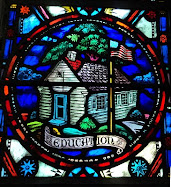Dear friends,
This is an excerpt from my book Common Sense Excellence: Faith-Filled Home Education for Preschool to 5th Grade. I'm really glad my kids are nature lovers! We're going back to Secret Lake Park today to catch some little fishies, with a real net this time! (See Florida Field Trips #4: Secret Lake Park) The photos and bird sketch in this post are from my son Micah's blog, http://www.godsanimals.blogspot.com/. (Note: We're having problems with his blog right now, so as of June 23, you can't access it and the pictures that I linked here from there aren't showing up. We're trying to get that fixed ASAP!)
Enjoy!
Nature Walks
Here are some ideas for your own nature explorations:
Keep your eyes and ears open. Learning to pay attention is so important to nature study! We often hear a red headed woodpecker rat-tat-tatting on our back fence.
Practice nature safety. Learn to avoid poisonous snakes, stinging insects, irritating plants, and hazardous bodies of water. Wear protective clothing, sun screen, and/or insect repellent.
Find an experienced nature mentor. This human resource can answer your questions and help guide your explorations. It could be an adult who works in this field, but don’t overlook home schooled kids as resources. When we had questions about catching bugs or growing pineapples, we used to call two middle school boys in our support group.
 Keep a nature journal. Have your children make drawings or rubbings of what they see, and then label them, also telling where they found the specimen. For language arts, they can also “paint” a word picture to describe a flower or other nature object. A nature journal is also handy for recording changes in the seasons or the weather from day to day or week to week.
Keep a nature journal. Have your children make drawings or rubbings of what they see, and then label them, also telling where they found the specimen. For language arts, they can also “paint” a word picture to describe a flower or other nature object. A nature journal is also handy for recording changes in the seasons or the weather from day to day or week to week.Take pictures. Show your child how to take landscape pictures or close-up shots.
Bring portable field guides: I recommend Peterson’s or Audubon. At the minimum, you should have one each for birds, insects & spiders, and flowers. Trees, reptiles, rocks & minerals, and other guides will be useful too, if your child is interested. A regional field guide will focus on species which are most commonly seen in your area.






.jpg)










No comments:
Post a Comment